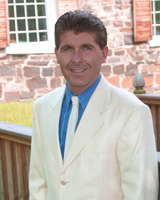Editorial
Front Page - Friday, October 8, 2010
Southern Style
The cure
Randall Franks

In the valley of the Gravelly Spur, the cold wind of winter would often bring a sickness which flowed from one house to another like rural free delivery.
During the Depression, folks in the valley had three places to turn for help – Dr. Thurmond, who would ride out from town and make the now almost extinct house call; Uncle Sam, the faith healing man; and Aunt Sally and her sure-fire elixir of health.
Aunt Sally was a wisp of a woman who lived at the head of Knobbely Cove back up above Devil Step Holler, a gentle curve that sat back up in the side of the Gravelly Spur. In her 80s in the 1930s, her long gray hair would blow in the winter wind across the same woolen green dress she always wore as she stood looking out from the cabin porch.
Since the time the first whites came to the area, long before there was a doctor, folks relied on the home remedies passed from generation to generation to ward off some of the worst ailments – things like sheep dung tea, wormseed and other such remedies.
Sally was the local purveyor of a tried and true medication that was passed down from mother to daughter in her family.
There was hardly a family that did not have a bottle of the remedy, the “elixir of health” as she called it, tucked away somewhere in the house. The clear elixir was used for everything imaginable that could ail you. The ladies of the valley would often take it out, pour a bit in a pot, mix in a peppermint stick and give it to children to improve their cough or ease labored breathing.
Of course, most folks in the valley knew that the remedy was pure moonshine whiskey. I imagine that on occasion the adults sampled a bit of it “for medicinal purposes only.”
During Prohibition, city folks (a.k.a. revenuers) began combing the mountains looking for those who might be making illegal whiskey. The news of their arrival in the valley spread faster than scarlet fever.
As they visited house to house, no one knew of anyone making such a thing in the valley.
They even worked their way back up to Aunt Sallys where she invited them up on the porch and served them hot apple cider with a cinnamon stick.
They declined her invite to “come on in,” saying, “We best be on our way.”
Had they entered in the back of the main room they would have seen the remedy machine, a large metal pot with all types of copper coils snaking around it.
Much later, a sharecropper named Tate took up the same hobby in his spare time. However, he did not create a medicine, but something simply for drinking purposes.
He hid his apparatus in Indian Cave. Before long, folks were driving into the valley and traipsing up to the old cave. He was doing so well that he was in the process of building a little dance floor in the cavern when the menfolk of the valley decided to put a stop to it.
They were afraid that Tate’s operations would bring back the revenuers and hurt Aunt Sally.
Rather than bring in Sheriff Hensley, folks there often would see to their own problems and, if needed, turn the folks over to the sheriff later.
The men folk destroyed Tate’s still and gave him a good “talking to.” There may have been a little more than talking, but in any event he went out of business.
One good thing came from it though; with just a little more work on the dance floor, the community acquired a new cool place at Indian Cave to hold socials when the summer heat became unbearable.
Aunt Sally kept making the remedy another 15 years until she passed away. In fact, a number of folks in the valley found that when gas was scarce during World War II, the remedy would work in a pinch. I don’t know if Aunt Sally passed on her remedy recipe, but as doctors and drugs for this and that became more readily available, there was not much need for her type of medicine.
Who knows, she might have sold her recipe to one of those big-time pharmaceutical companies.
I bet you’ll find a little bit of the remedy in almost every single cough medicine you pull off the shelf.
Randall Franks is an award-winning musician, singer and actor. He is best known for his role as “Officer Randy Goode” on TV’s “In the Heat of the Night” now on WGN America. His latest CD release, “An Appalachian Musical Revival,” is by www.shareamericafoundation.org. He is a member of the Atlanta Country Music Hall of Fame. He is a syndicated columnist for http://randallfranks.com/ and can be reached at rfrankscatoosa@gmail.com.
|
|